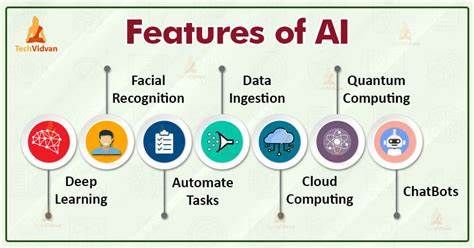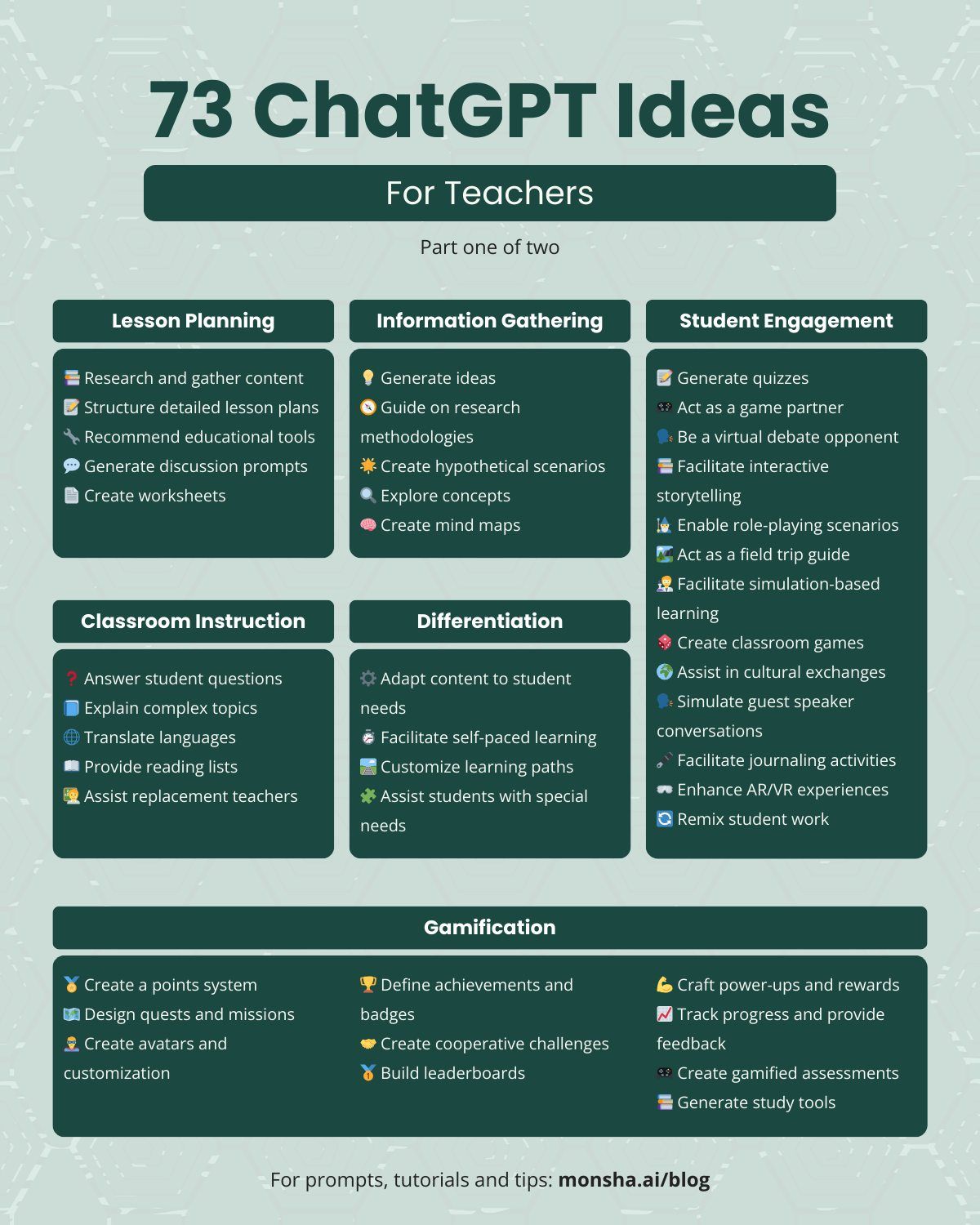AI in education of life sciences and earth sciences encompasses personalized learning, adaptive platforms, virtual simulations, intelligent tutoring, data analysis, and natural language processing. These technologies tailor educational experiences to individual students, adjusting content difficulty and providing real-time feedback. Virtual labs and simulations offer hands-on exploration, while data analysis aids in understanding complex phenomena. NLP tools enhance interaction with scientific texts. Together, these functions empower students to engage deeply with these disciplines, fostering comprehension and critical thinking.
-
Functions of AI in education
"Empowering students through engaging education, fostering environmental consciousness, and advancing scientific literacy. Committed to shaping future leaders in Life and Earth Sciences."
-
Hi,
Hope everything is going well.I use Seeing AI app for my students with visual impairments and autism in the SPED program. With Seeing AI my students identify money to purchase items, colors to wear clothes, bar codes to know about the product in a supermarket, and so on. Also, I use reading progress in TEAMS app, which use AI to identify the words that my students with communication disparities can't pronounce well.
Not everything is AI to generate information, try to find apps or solutions that apply AI to other tasks.
Best of luck. Hugs from Puerto Rico.
Mr. Bryan
-
Hello Ekaterina,
AI in education serves various functions like personalized learning, adaptive learning, automated grading, and virtual tutoring. For instance, in life sciences education, AI-powered platforms can analyze students' learning patterns to personalize lessons. These platforms might offer adaptive quizzes that adjust difficulty based on performance and provide immediate feedback through automated grading. Additionally, virtual tutors powered by AI can assist students in understanding complex biological concepts outside of class hours. AI also aids in creating interactive simulations and virtual laboratories, allowing students to explore scientific concepts in a hands-on manner. These functions not only enhance learning experiences but also make education more accessible and efficient for both students and educators."Empowering students through engaging education, fostering environmental consciousness, and advancing scientific literacy. Committed to shaping future leaders in Life and Earth Sciences."
-
As a computer science teacher, I sometimes ask Google AI Studio and ChatGPT to generate programming exercises, spreadsheet assignments, and database tasks. I simply give them examples of what we solve in class and ask them to generate similar tasks on the topic. In MS Excel, I write down the functions we've covered and ask it to come up with additional exercises of varying difficulty.
Best regards,
Mr Denis
ICT & IT & Computer science teacher -
Hi Denis,
Hope everything is going well.That's a fantastic approach in my opinion. Leveraging AI tools like Google AI Studio and ChatGPT to create tailored programming exercises and assignments is a smart way to keep your students engaged and challenged. It's great to read how you're using MS Excel to organize and expand on the functions you've covered in class. Your method not only saves time but also ensures a diverse range of practice problems for your students.
Thanks for sharing this innovative technique,
Mr. Bryan -
Hi @Bousl2336873cb4
Hope everything is going well.For sure, AI has incredible potential to revolutionize education in so many ways. Personalized and adaptive learning ensure that each student can progress at their own pace, receiving the support they need when they need it. Overall, AI is a powerful tool for making education more effective, efficient, and accessible. Nowadays we face a variety of students with multiple needs, interest and strength. For me as a special education teacher AI has been an amazing resource to multiple my presence on every student desk.
Best,
Mr. Bryan -
I must confess that AI is absolutely revolutionizing Educational landscape. I rememeber from UNESCO webinar how keynote speakers of Europass Teacher Academy (the one to which @Ana_moderator has invited) were talking about tackling 2 sigma problem as a positive transformation that education has ever seen by providing intelligent personal tutor to every student. Besides, it's scalable and reliable assisstant of a teacher.
-
I have found a great resource, The Monsha Blog, which provides a variety of resources, tutorials, and discussions on artificial intelligence (AI), teaching, and education https://monsha.ai/blog/
I would like to share with you an infographic from the website that I found particularly useful. It contains 73 chat CPT ideas for teachers.

-
@Ana_moderator Thanks Ana, for sharing such a great resource and the fantastic infographic on using ChatGPT for teachers! I love when information is presented in different formats. It's much more engaging and accessible.
Best regards,
Mr Denis
ICT & IT & Computer science teacher -
@Bilim Could you please tell me where I can watch this webinar? Unfortunately, I joined the community a bit late and missed it. I'm always interested in hearing other educators' thoughts on the transformation of education. Thanks in advance!
Best regards,
Mr Denis
ICT & IT & Computer science teacher -
Sure, Denis
here are the links sent by Ms Shutova from UNESCO IITEBelow are a few useful links:
The live stream of the webinar is available on YouTube: https://www.youtube.com/live/e6ht1m1Vlok?si=BYOTQjQzN6mPoUsc
UNESCO IITE site with the announcements of future events and contests: https://iite.unesco.org/
UNESCO IITE YouTube channel with recordings of past events: https://www.youtube.com/user/UNESCOIITE
E-Library (repository of free online courses and other materials for educators): https://elibrary.iite.unesco.org/elibrary/h5
‘Teaching in the 21st Century’ contest link (deadline extended till June 7!): https://iite.unesco.org/announcements/teaching-in-the-21st-century-teacher-competition-2-0/
Europass Teacher Academy official website: https://www.teacheracademy.eu
Links to free online courses on fundamentals of AI:
https://learn.microsoft.com/en-us/training/paths/ai-education/
https://www.coursera.org/learn/ai-for-everyone
UNESCO IITE webinar on Ethics in Education technology: https://www.youtube.com/watch?v=SSOVj4Rhl3s&t=2s
Tool that doesn't need registration: https://www.perplexity.ai/
AI tool for creating chatbots: https://schoolai.com/Free offline AI: https://lmstudio.ai/
Best regards,
Ms Tatiana Shutova,
UNESCO IITE -
@Bilim Thanks for the links, Bilim! I'm going to explore the resources.
Best regards,
Mr Denis
ICT & IT & Computer science teacher -
@EKATE97ee9b6685 I've found AI to be incredibly helpful in personalizing learning for my students. It can quickly assess their progress and offer tailored lessons, saving me a lot of time. Also, using AI for grading and feedback is a huge time-saver. I appreciate how it can handle administrative tasks and provide data insights, helping me adjust my teaching strategies. While I don't use it to generate content often, the language support tools are great for helping students practice and improve their skills. How are others using AI in their classrooms?
Educate People, Save The World..
-
we must create and ICT based environment to enhance the teaching learning environment in class.
-
I am happy to exchange experiences about integrating artificial intelligence into education, especially at the secondary level, and I am happy to be with you
-
I am feeling blessed that UNESCO gathered all teachers to exchange ideas for a better teaching environment.
-
- Personalized Learning:
- Use AI-driven platforms to tailor content based on individual student performance and learning pace.
-
Intelligent Tutoring Systems:
- Provide instant feedback on assignments and quizzes to help students understand and learn from their mistakes.
-
Enhanced Student Engagement:
- Implement gamified learning apps that make studying more engaging through rewards and challenges.
-
Data-Driven Insights:
- Analyze student performance data to identify trends, strengths, and areas for improvement.
-
Predictive Analytics:
- Use AI to predict which students might need extra help or are at risk of falling behind.
-
Efficient Grading and Assessment:
- Use AI tools to automate grading of tests, essays, and assignments for consistent evaluations.
-
Resource Recommendations:
- AI can recommend textbooks, articles, videos, and other resources tailored to the curriculum and individual student needs.
-
Language and Literacy Support:
- Utilize AI translation tools and reading assistants to support non-native speakers and improve reading skills.
-
Classroom Management:
- Use AI to monitor classroom behavior, track attendance, and provide insights into student engagement.
-
Professional Development:
- AI tools can identify areas for teacher development and provide personalized training programs.
-
Dear @OLAEL62ff0ca365 I am also interested.
Ani Bareghamayan
Art teacher
Address: Armenia -
@Bilim
Hello Bilim,
Thanks for sharing the links. I will review them and revert back. -
Artificial Intelligence (AI) is increasingly important across various domains due to its ability to transform industries, enhance human capabilities, and address complex challenges. Here are several reasons why AI is so significant:
- Automation of Repetitive Tasks
Increased Efficiency: AI automates repetitive and mundane tasks, freeing up human workers to focus on more creative and strategic activities.
Cost Reduction: Automation can significantly reduce operational costs by minimizing the need for manual labor and increasing productivity. - Data Analysis and Insights
Big Data Processing: AI can analyze vast amounts of data quickly and accurately, uncovering patterns and insights that humans might miss.
Informed Decision Making: Businesses can make data-driven decisions, leading to better strategies and outcomes. - Personalization
Customized Experiences: AI enables the creation of personalized experiences in various sectors, including e-commerce, entertainment, and education, by analyzing user preferences and behavior.
Improved Customer Service: AI-driven chatbots and virtual assistants provide personalized customer support, improving satisfaction and engagement. - Healthcare Advancements
Diagnosis and Treatment: AI algorithms can analyze medical data to assist in diagnosing diseases and recommending treatments, potentially improving patient outcomes.
Drug Discovery: AI accelerates the drug discovery process by predicting the efficacy of compounds, reducing the time and cost involved. - Enhanced Security
Threat Detection: AI enhances cybersecurity by detecting and responding to threats more quickly than traditional methods.
Fraud Prevention: Financial institutions use AI to detect fraudulent activities by analyzing transaction patterns and identifying anomalies. - Innovation and Creativity
New Products and Services: AI fosters innovation by enabling the development of new products and services that were previously unimaginable.
Creative AI: AI systems can generate art, music, and literature, expanding the boundaries of human creativity. - Economic Growth
Productivity Boost: AI-driven automation and efficiency improvements can boost productivity and economic growth.
Job Creation: While AI may displace some jobs, it also creates new opportunities in AI development, maintenance, and other tech-related fields. - Addressing Global Challenges
Climate Change: AI is used to monitor environmental changes, optimize resource use, and develop sustainable solutions.
Public Health: AI helps track disease outbreaks, model their spread, and plan effective responses. - Improved Accessibility
Assistive Technologies: AI powers assistive technologies that help people with disabilities lead more independent lives, such as speech recognition for those with mobility impairments.
Language Translation: AI-driven translation services break down language barriers, enabling better communication and collaboration globally. - Research and Development
Scientific Research: AI accelerates research in various fields by automating complex calculations and simulations.
Innovation Hubs: AI research drives technological advancement, creating innovation hubs and attracting investment.
- Automation of Repetitive Tasks